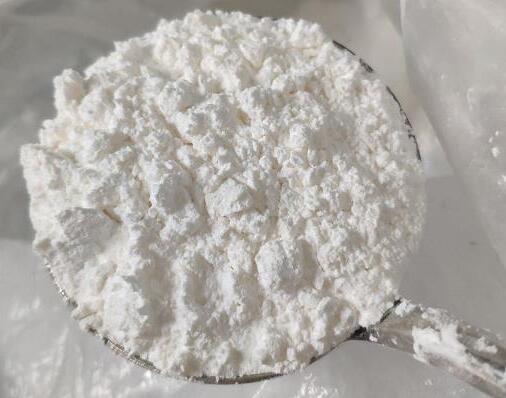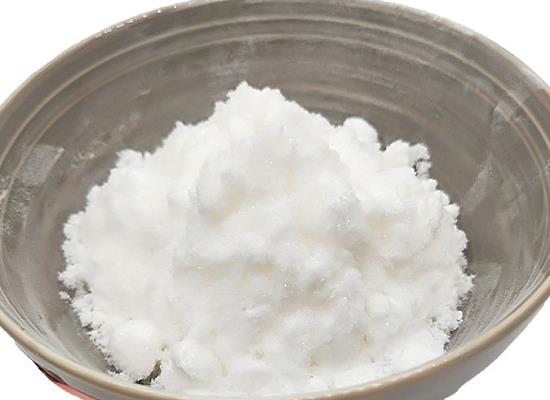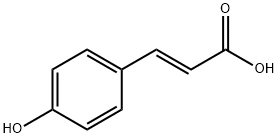p-Coumaric acid: Mechanisms for Antimelanogenic Effects, Skin and Cell Membrane Permeability
May 10,2024
General Description
p-Coumaric acid, a potent phytochemical abundant in plants, exhibits diverse biological activities including antioxidant, antimicrobial, anti-inflammatory, and potential anticancer effects. p-Coumaric acid shows promise in combating oxidative stress, inflammation, microbial infections, and cancer progression. Mechanistically, it inhibits melanin synthesis by competing with tyrosine for active sites on the tyrosinase enzyme, while also modulating redox signaling pathways. Despite its limited cell membrane permeability due to its negatively charged carboxyl group, its amphiphilic nature allows efficient transdermal delivery, making p-Coumaric acid a promising option for topical application in melanin-related disorders.
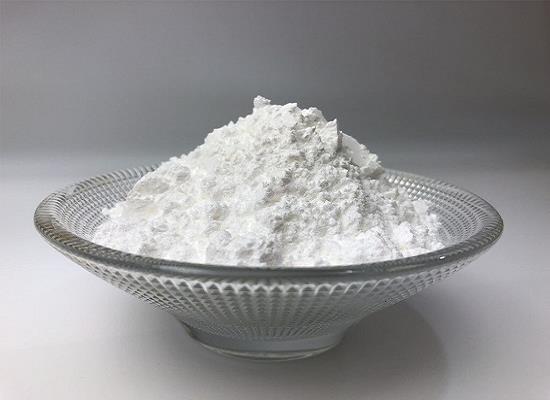
Figure 1. p-Coumaric acid
A Phytochemical with Multiple Biological Activities
p-Coumaric acid, a derivative of cinnamic acid, stands out as a prominent phenolic compound in the plant kingdom, notably abundant in various fruits, vegetables, and cereals. With its robust antioxidant properties, p-coumaric acid serves as a potent scavenger of reactive oxygen species (ROS) and free radicals, thus exhibiting potential benefits for human health and beauty. Research has highlighted its multifaceted biological activities, including antimicrobial effects by disrupting bacterial cell membranes and intercalating bacterial genomic DNA. Moreover, p-coumaric acid demonstrates significant antioxidant capabilities, showcased in various cellular models exposed to oxidative stressors like UV radiation and high glucose. In animal studies, p-coumaric acid has shown promise in reducing oxidative stress, activating antioxidant pathways, and mitigating inflammatory responses. Its ability to enhance cardiac antioxidant capacity by activating Nrf2, a key transcription factor regulating antioxidant gene expression, underscores its potential in combating oxidative damage in vital organs. Furthermore, p-coumaric acid exhibits anti-inflammatory properties, as evidenced by its effects in reducing inflammatory markers and ameliorating tissue damage in various disease models. Notably, its potential anticancer effects have garnered attention, with studies demonstrating its ability to inhibit cancer cell proliferation, promote apoptotic cell death, and mitigate inflammatory reactions associated with tumorigenesis. In summary, p-coumaric acid emerges as a phytochemical powerhouse with diverse biological activities, offering potential therapeutic benefits in combating oxidative stress, inflammation, microbial infections, and even cancer progression. 1
Mechanisms for Antimelanogenic Effects
p-Coumaric acid exhibits antimelanogenic effects primarily by inhibiting new melanin synthesis rather than decreasing preexisting melanin levels. In vitro studies suggest that it directly inhibits the catalytic activity of tyrosinase, a key enzyme in melanin synthesis, particularly when L-tyrosine is used as the substrate. Structurally similar to L-tyrosine, p-coumaric acid may compete with it for active sites on the tyrosinase enzyme, further impeding melanin production. Controversy exists regarding p-coumaric acid's effect on tyrosinase expression levels. While some studies indicate a reduction in tyrosinase expression, others show no significant impact. It's proposed that p-coumaric acid may interfere with L-tyrosine's hormone-like stimulatory role in tyrosinase gene expression by preventing its binding to MSH receptors, adding to its antimelanogenic effects. Moreover, p-coumaric acid exhibits antioxidant properties by suppressing ROS-induced phosphorylation of MAP kinases, thereby modulating redox signaling pathways associated with melanin synthesis and melanosome biogenesis. This antioxidant activity extends to other cellular processes, such as hepatic cell apoptosis and inflammation, suggesting a broader role in cellular protection. While further research is needed to fully elucidate its mechanisms, p-coumaric acid holds promise as a natural compound for mitigating melanin-related disorders and oxidative stress-induced damage. 2
Skin and Cell Membrane Permeability
Skin and cell membrane permeability are critical factors influencing the efficacy of tyrosinase inhibitors like p-coumaric acid in mitigating melanin synthesis. Despite being a small molecule, p-coumaric acid's negatively charged carboxyl group at neutral pH limits its cell membrane permeability. In vitro studies on mouse melanoma cells revealed weaker inhibition of melanin synthesis by p-coumaric acid compared to methyl p-coumarate, attributed to its lower cell membrane permeability. This disparity was further evident in human epidermal melanocytes stimulated with L-tyrosine, where p-coumaric acid exhibited less effective melanin synthesis inhibition than methyl p-coumarate. To assess skin permeability, excised porcine skin, a model resembling human skin, was utilized. Using a simple diffusion device, p-coumaric acid and methyl p-coumarate were applied separately, with p-coumaric acid demonstrating the ability to penetrate the skin layers and diffuse into the underlying aqueous medium. Conversely, methyl p-coumarate exhibited retention in lipophilic skin layers or required conversion to p-coumarate for transfer into the aqueous medium. Given p-coumaric acid's amphiphilic nature, possessing both hydrophobic and hydrophilic properties, its transdermal delivery can be expedited compared to the highly hydrophobic methyl p-coumarate. This dual property enables p-coumaric acid to traverse the skin layers efficiently while facilitating diffusion into the surrounding aqueous medium, highlighting its potential as a viable option for topical application in melanin-related disorders. 2
Reference
1. Pei K, Ou J, Huang J, Ou S. p-Coumaric acid and its conjugates: dietary sources, pharmacokinetic properties and biological activities. J Sci Food Agric. 2016; 96(9): 2952-2962.
2. Boo YC. p-Coumaric Acid as An Active Ingredient in Cosmetics: A Review Focusing on its Antimelanogenic Effects. Antioxidants (Basel). 2019; 8(8): 275.
- Related articles
- Related Qustion
- Exploring the Biological Activities of p-Coumaric Acid: A Powerful Compound from Dietary Sources Dec 28, 2023
p-Coumaric acid is a compound found in plants and mushrooms and exhibits significant antioxidant and anticancer activities.
- What is p-Coumaric acid used for? May 23, 2023
p-coumaric acid, a phytochemical and nutraceutical, can be found in several edible plants like tomatoes, carrots, and cereals. It is widely present in the cell walls of graminaceous plants and can reduce LDL peroxidation.
p-Coumaric acid
501-98-4You may like
- p-Coumaric acid
-
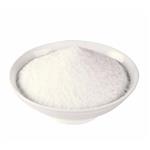
- $3.50 / 1kg
- 2025-01-21
- CAS:501-98-4
- Min. Order: 1kg
- Purity: 0.99
- Supply Ability: 3000tons/month
- 4-Hydroxycinnamic acid
-

- $0.00 / 25Kg/Drum
- 2025-01-21
- CAS:501-98-4
- Min. Order: 1KG
- Purity: 99%
- Supply Ability: 500mt/year
- 4-Hydroxycinnamic acid
-
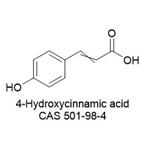
- $0.00 / 1kg
- 2025-01-21
- CAS:501-98-4
- Min. Order: 1kg
- Purity: 99%+
- Supply Ability: 1000000kg per Month




